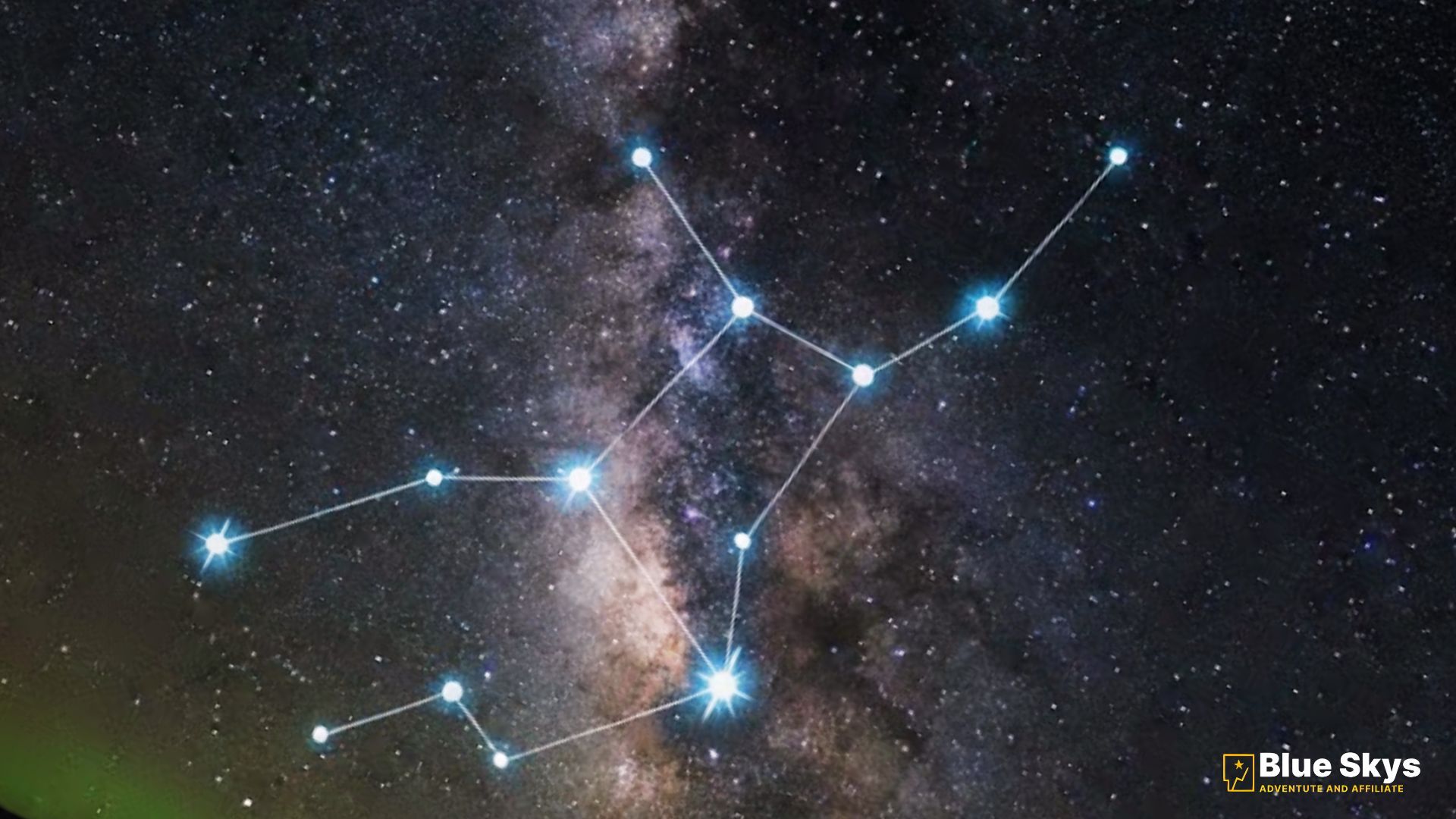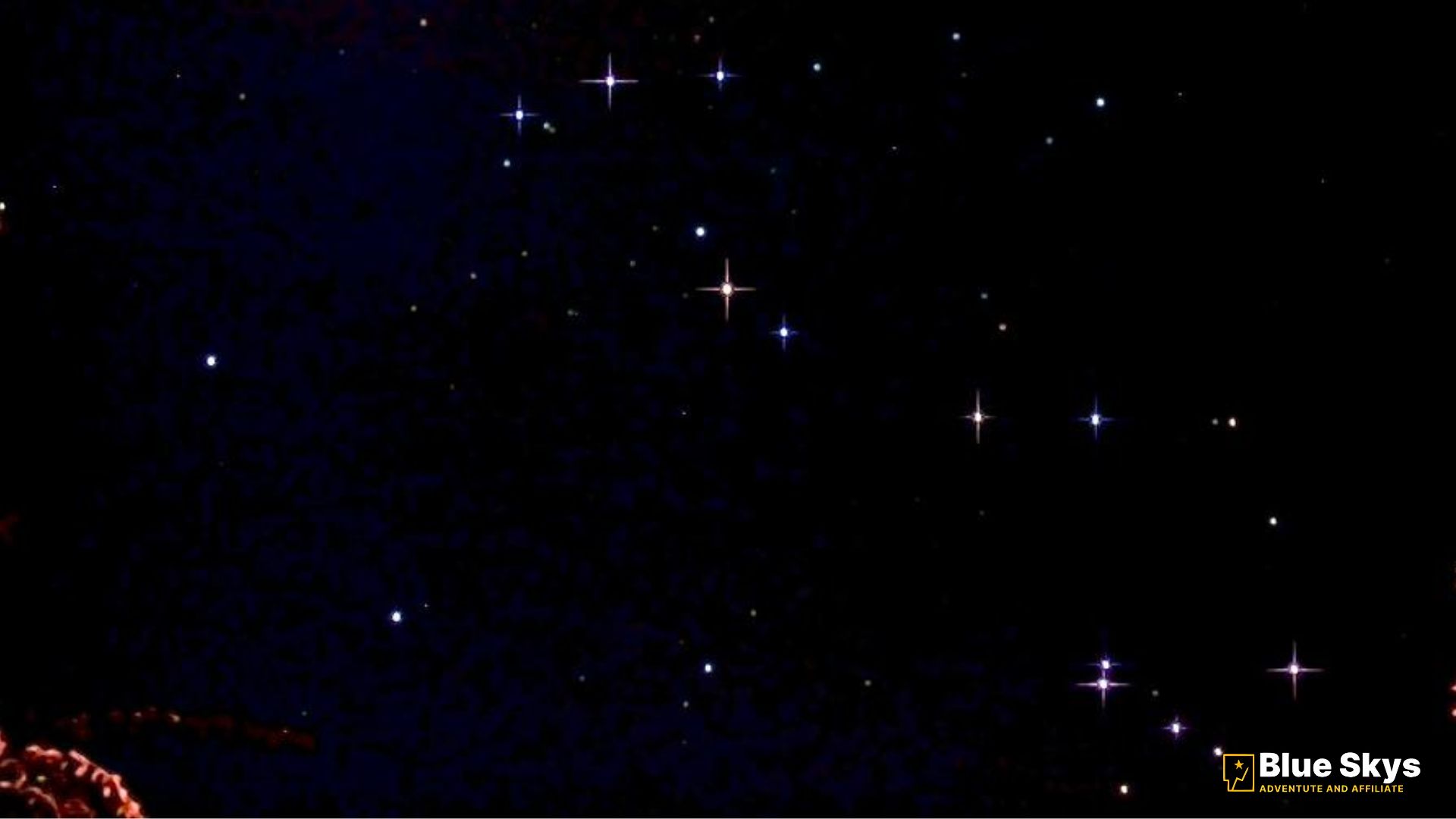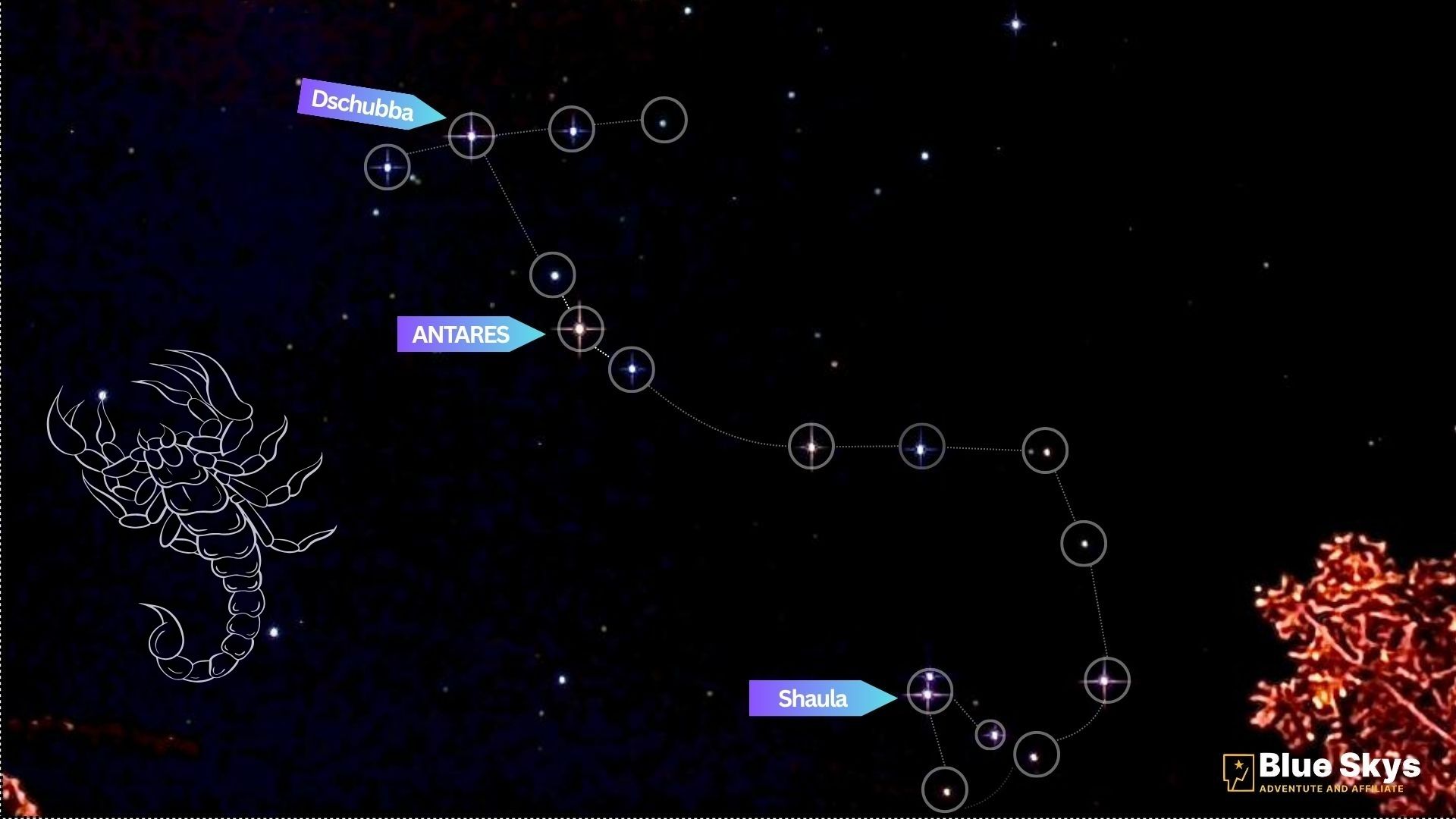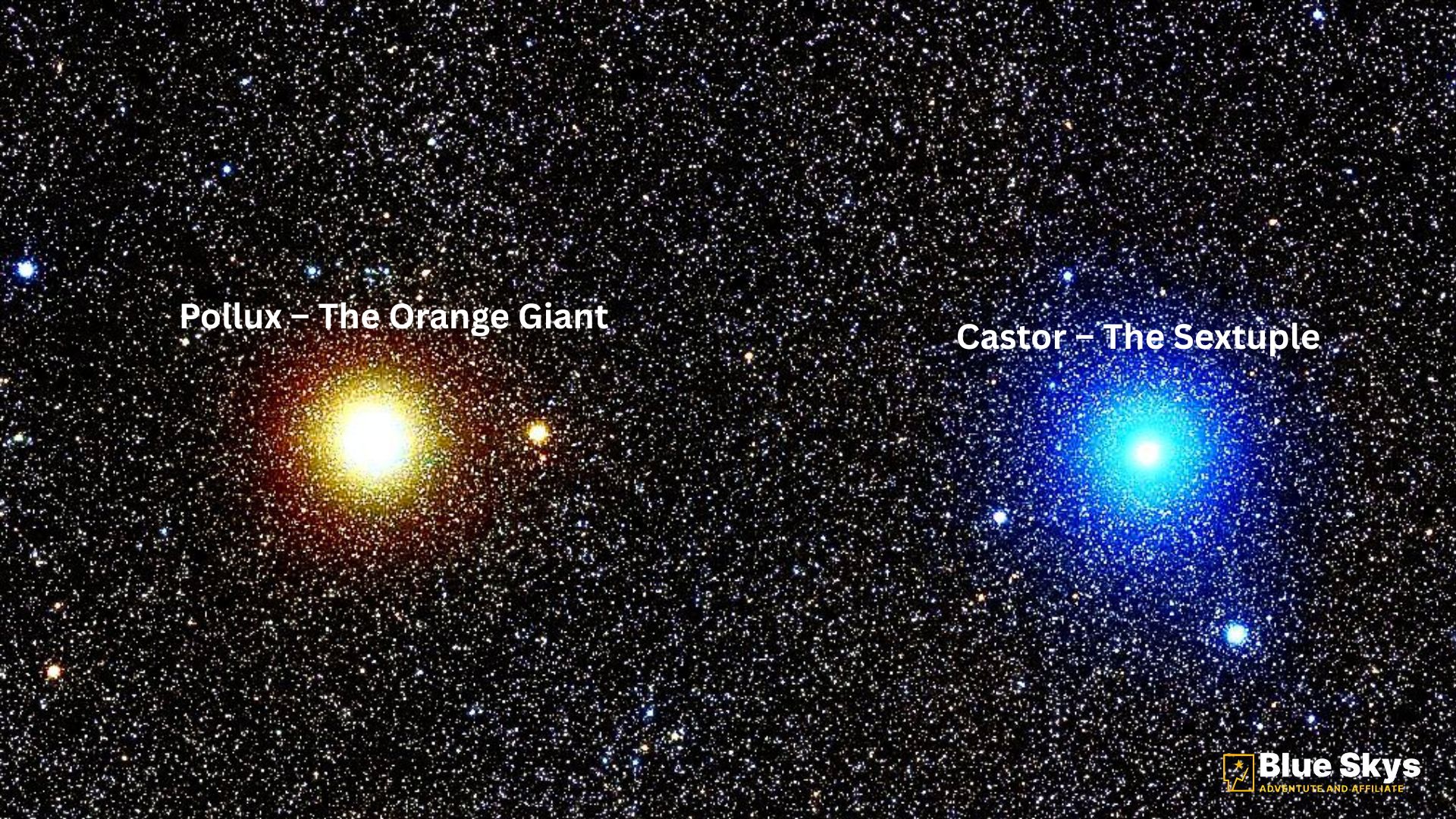There are constellations you stumble across by accident — and then there’s Leo, the one that almost announces itself.
Every spring, the Lion climbs into the eastern sky, bold as a sunrise. If you’ve ever tilted your head back on a cool March evening and spotted a backwards question-mark of stars curling into the sky, you’ve already seen Leo’s proud head. And if not? Consider this your invitation.
This guide blends practical stargazing, myth & history, and deep-sky exploration — with tips whether you’re looking with naked eye, binoculars, or a telescope. If you’ve ever wanted to track constellations, photograph galaxies, or just feel closer to the sky, Leo is the perfect companion.
Why Leo Matters in the Night Sky
Leo isn’t subtle — and that’s why astronomers love it.
-
Easy to find
-
Bright stars
-
Rich galaxy fields (including the famous Leo Triplet)
-
Cornerstone of spring stargazing
It’s a constellation that invites everyone — beginner to seasoned observer — to slow down, look up, and let curiosity do the rest.
⭐ How to Find Leo Constellation
| Best Season | Hemisphere | Best Viewing Time |
|---|---|---|
| Spring | Northern | February – May (around 9–11 PM) |
| Autumn | Southern | August – October (low in north) |
📌 Peak moment: Mid-March evenings — Leo stands almost overhead in dark skies.
Star-Hopping Guide
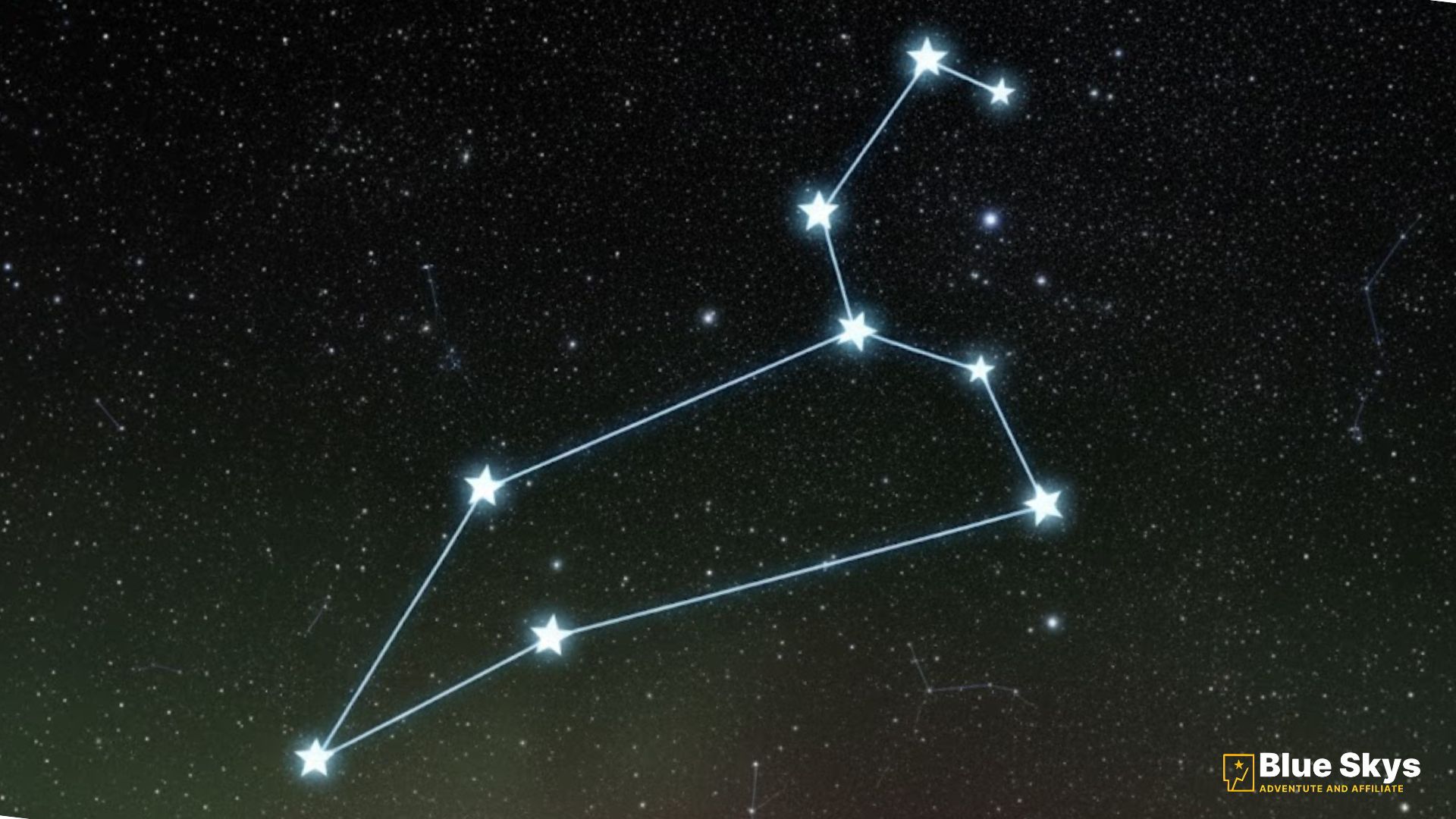
Start with the Big Dipper. Trace a line from the Dipper’s handle back toward the horizon — you’ll land on the Sickle, Leo’s dramatic head and mane.
The sickle shape looks like:
✔ backward question mark
✔ lion’s mane sweeping back
✔ hook of bright stars anchored by Regulus
Follow the Sickle to the right — you’ll see a long triangle forming the Lion’s hindquarters and tail.
Even in light-polluted skies, Leo is one of the most recognizable zodiac constellations.
🌟 Key Stars in Leo: Regulus (Alpha Leonis)
-
Nickname: The Heart of the Lion
-
Magnitude: ~1.35
-
Type: Blue-white main-sequence star
-
Distance: ~79 light-years
-
Fun fact: Spins so fast it bulges at the equator
A star of kings — literally. Ancient cultures used Regulus for royal astrology. Today, it’s an anchor star for spring alignment.
Denebola (Beta Leonis)
-
Magnitude: ~2.1
-
Position: Leo’s tail
-
Marker for spring skies & meteor shower radiant
Algieba (Gamma Leonis)
-
A double star — golden + reddish pair
-
Beautiful in small telescopes
-
Looks like embers in a fireplace
If you want a target that feels intimate and alive, Algieba is the one.
🌌 Deep-Sky Treasures in Leo
Leo isn’t only about stars — it’s a gateway to galaxies.
⭐ Leo Triplet (M65, M66, NGC 3628)
Three spiral galaxies dancing together on the edge of vision.
| Galaxy | Type | Notes |
|---|---|---|
| M65 | Spiral | Narrow, subtle elegance |
| M66 | Spiral | Bright core, easy for beginners |
| NGC 3628 | Edge-on spiral | The “Hamburger Galaxy” |
📸 Astrophotography Tip:
Wide-field shots capture all three in one frame. A tracking mount helps; dark skies make them pop beautifully.
🌀 Messier 95, 96 & 105
Often overlooked — but they reward patience.
-
M95: Barred spiral
-
M96: Spiral with soft halo
-
M105: Elliptical galaxy with hidden companions
If the Leo Triplet is the headline act, this trio is the intimate encore.
🌠 Meteor Showers From Leo
-
Peak: Mid-November
-
Famous for storm-level outbursts
-
Radiates from near Regulus
Some years deliver only ~15 meteors/hour. Others? The sky tears open — 1833, 1966, 2001 — legendary storms where meteors fell like rain. Even average years feel like whispers from cosmic history.
📖 Myth & Meaning
In Greek mythology, Leo represents the Nemean Lion, a beast no weapon could harm — until Hercules defeated it in his first labor. The lion was immortalized in the heavens.
Across cultures, Leo symbolized:
-
Royalty
-
Courage
-
Solar power & spring renewal
It’s one of the oldest recognized constellations, tied to agriculture, timekeeping, and navigation for thousands of years.
🔭 Viewing Leo: Beginners to Pros
Naked Eye
-
Find the Sickle first
-
Follow the body to Denebola
-
Notice the size — Leo fills a wide patch of sky
Binoculars
-
Algieba double star
-
Star fields around the Sickle
-
M66/M65 on a very clear night
Telescope
| Target | Equipment |
|---|---|
| Algieba double star | 80mm+ scope |
| M66 & M65 | 4-inch scope or better |
| Leo Triplet full detail | 8-inch scope + dark skies |
📸 Astrophotography Tips for Leo
-
Capture the Sickle arc
-
Use 50mm to 135mm lens for constellation framing
-
Track for long exposure galaxy shots
-
Shoot March–April for best clarity
-
Visual anchor: Regulus as leading star
For galaxy imaging:
ISO 800–1600, long exposures, stacking recommended.
🧭 Coordinates, Visibility & Path
| Right Ascension | Declination |
|---|---|
| 10h 30m | +15° |
Visible between latitudes +90° to −65° — truly global.
🌱 Why Leo Is a Gateway Constellation
If you’re learning the sky, Leo helps you:
-
Build star-hopping confidence
-
Transition from winter giants (Orion) to spring galaxies
-
Start deep-sky hunting
-
Connect seasonal movement of the heavens
It teaches patience, orientation, and reward — three pillars of stargazing.
🌌 Final Thoughts: Following the Lion
Every spring night carries a different mood. Some skies feel soft and quiet. Others shimmer with promise. But when Leo rises, the night feels alive — bold, ancient, certain. Trace the Sickle. Find Regulus beating steady against the dark. Breathe in the cold air and remember: the sky isn’t a map to memorize — it’s a story to walk through. And Leo? Leo is one of the first pages worth turning. Clear skies, and may your path always find the lion.
